Today was another short day trip down the road (since we are
leaving on an overnight tomorrow), this time to a couple of villages further
along the coast to the east. A tip from
Nancy indicates that the small town of Santo Stefano de Camastra is famous for
its ceramics
and the cluster of old families who have been making world-class
goods there for generations. We arrive
there after a nice drive along the winding coast road (no autostrada for us on
these day trips) and have about an hour to check out the shops before they
start closing at 1 p.m.. (This timing issue
is almost as difficult for us here as it was in Argentina; we just have a hard
time remembering the afternoon closures.)
(We also have a hard time getting up early, which may play a role).
We find a small high quality shop early in
our survey, whose proprietor indicated he was staying open, so we continued to
scout the prospects. Meanwhile, the
usual mid-day rain
squall came up and it poured as we bounced in and out of
shops. Many of them on the main street
reminded us of the different shops on Fourth Avenue in Anchorage, where you can
immediately sense whether you are in a tacky tourist trap or a serious art
vendor. It was lucky we’d seen a quality
shop early in our walk, or we might have become discouraged by the endless
junk. When we wandered back by, we ended
up buying a few beautiful, colorful ceramic items (which Phyllis worries about
how we will get safely home, but that’s for another day). We also have a lively conversation in Italian
and sign language with the owner, who has a cousin who lives in
Pennsylvania
and has somehow arranged for the Pennsylvania city to be a sister city to Santo
Stefano. He has visited his cousin, in
fact. It’s amazing what you can figure
out with enough waving of hands and enough Italian words that sound
sufficiently like Spanish that we can figure out the gist.
Meanwhile, the sun was shining again and we had a great
lunch of gelato from a café down the street to which our new friend directed
us, and strolled the piazza in the warm sun.
The weather here seems to be on the cusp of change; there are more
stretches of warmth than
when we first arrived over 2 weeks ago. On the way home, we stopped in another
village, Finale di Pollina, and strolled along its pedestrian waterfront park,
complete with much 1%-for-the-arts in the form of a string of sculpture gardens
and a well preserved medieval watchtower.
It spat rain again off and on, and there were not many people about,
only a couple of locals (one walking a dog, with whom we struck up a
conversation; dogs are such a great unifying force).
Back home, we tried a new home cooked meal for supper, using
“involtinis” from the local meat counter.
These are little strips of meat like pork wrapped around a filling of
cheese or
ground meat and grain or some vegetable, rolled in seasoning and
laced onto a wooden skewer, which you can then brown in olive oil and bake
briefly in the oven. We never figured
out what exactly the fillings were, or the covering meat for that matter, but
it was tasty. “Learning and discovery”,
as our safari guide Ronald was always saying in Tanzania… This is our new motto for that portion of our
travels whenever things are puzzling, yet are interesting. Like the traffic signs for example.

 Cefalù, Sicily, Italy
Cefalù, Sicily, Italy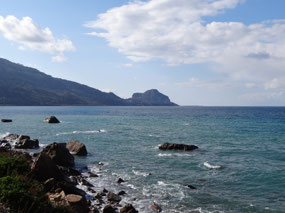
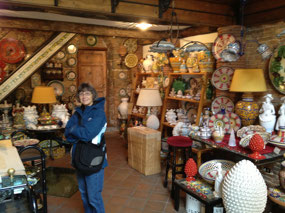
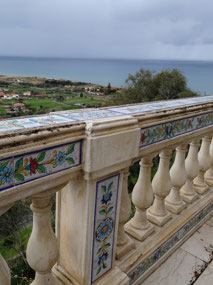
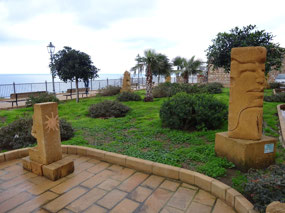
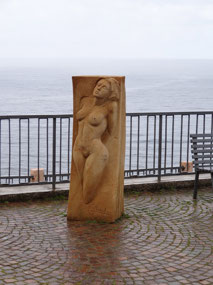




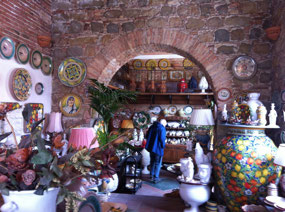
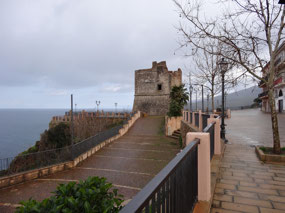
2025-05-23